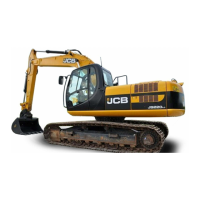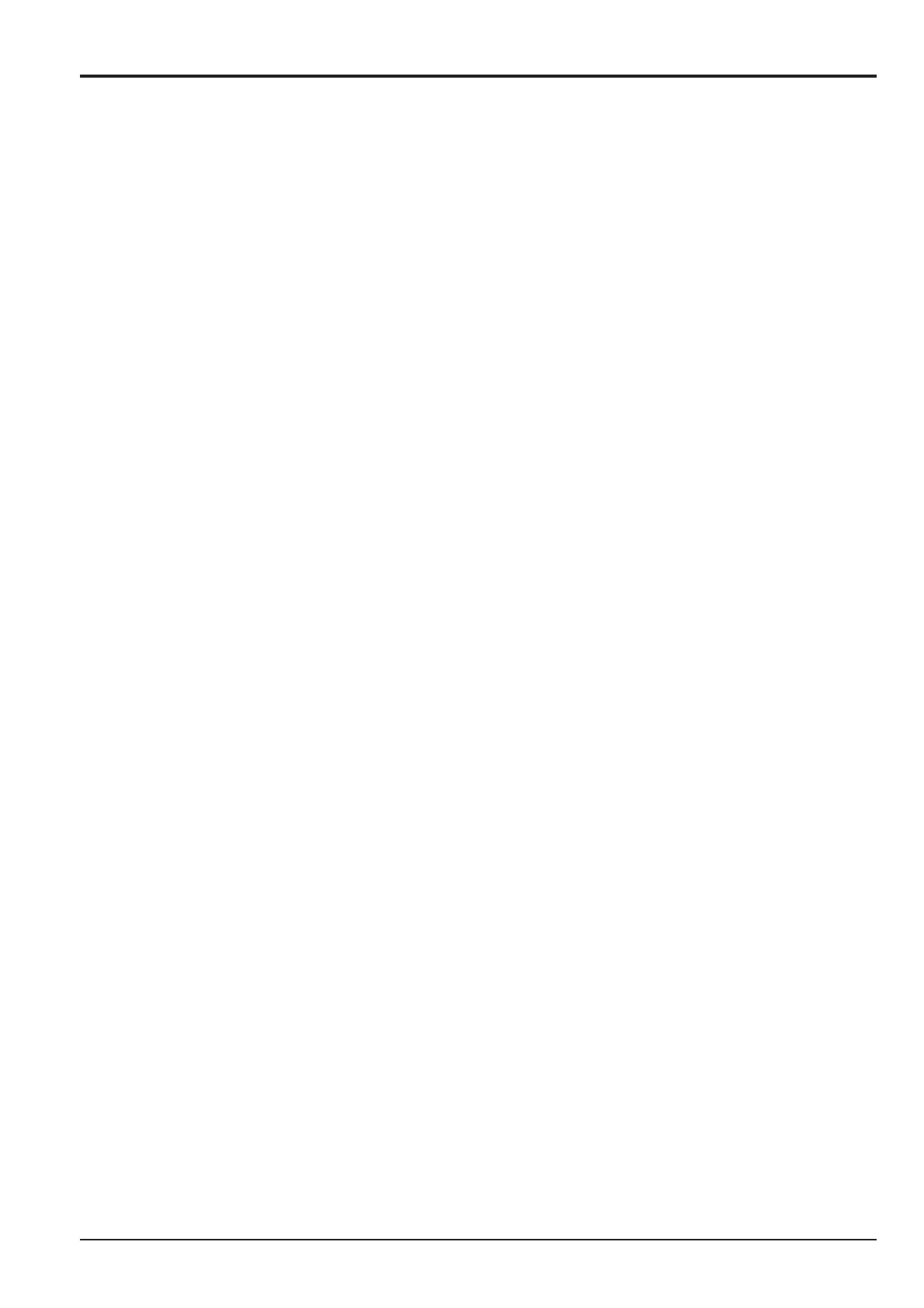31 - 6
Section E
Hydraulics
9803/6400
Section E
31 - 6
Issue 1
Control Valve JS200/JS240
Operation (continued)
Combined Operations
1. Travel Combination Operations (Refer to Fig. 1, 13).
When travelling forward or backward (including spin turn) any spool other than the travel spool is selected or when operating
the excavator, when the travel spool (left, right travel) spool is selected, the signal passage and tank passage are cut off at that
spool signal land and the signal passage pressure rises to the relief set pressure.
The pressure of P
t, P
f ports rises and when the signal passage pressure rises, the pressure of the signal passage (f) connects
to the straight travel spool recess (Fig. 1). It passes through the straight travel spool passage (p), (o) cavity pressure rises and
the spool selects to the left as shown. (Travel forward state).
Whilst the boom is lifting (boom II selected), when the travel spool is selected the pressure passing through the (i) (j) passage
rises, so the shuttle (Q) resists the spring force and moves to the right as shown (Fig. 13).
For this reason, passage x y is connected and the P
4 port oil flows from the outer piping through P3 port and is released to the
tank passage. The straight travel spool is then selected so the straight travel state is achieved.
(Fig. 1,13)
In this straight travel state, the oil delivered from P
R port activates the 4-spool traction motor, passes through passage d F and
activates the 5-spool traction motor. (Fig. 13)
In this way, the left and right traction motors are activated so straight travel can be maintained while simultaneous actions with
other services are carried out.
Also, the oil delivered to the P
L port is delivered to the 5-spool side from the 5-spool side parallel passage B. Part of the oil
pushes open the load check (R) and is led from passage C G c to the 4-spool parallel passage b, activating other services. (Fig.
13)
2. Boom Lowering Stroke Regulation (Refer Fig. 7).
Puts pressure on the Ps port of the boom section and activates the piston, moving the boom I spool back a little as shown.
When the spool is pushed back, the spool neutral passage a is opened and delivers oil to other spool sections.
3. Slew Priority Circuit (Refer to Fig. 2).
When operating the dipper and slew simultaneously, when the dipper load is light, the flow of oil for the slew section upstream is
obtained by means of the constrictions (v), so slew priority is maintained.
Relief Valve (Refer to Fig. 3, 5, 8, 9, 11).
PL port is connected to the load check (n) and passage E and PR port is connected to load check (m) and passage e. Both are
connected to the relief valve which prevents the maximum pressure of the 4-spool and 5-spool pump from exceeding the set
pressure. (Fig. 8) (=main relief valve).
The relief valve has a booster function so that when pressure is put on P
1 port, the set pressure of the high pressure side can
be changed.
Also, there is a relief valve on each ram port of the boom I (Fig. 3,5), bucket I (Fig. 11), dipper I (Fig. 9, 5-spool sectional
diagram J-J) and prevents the actuator pressure from becoming abnormally high due to outside forces. (=overload relief valve)
When the ram pressure becomes negative, the relief valve also functions to absorb oil from the tank and prevent cavitation.
(Combination port relief valve).

